Abstract
OBJECTIVE: To examine the characteristics of sexual assaults by strangers and those by people known to the victims in an urban community-based population of women. DESIGN: Descriptive study. SETTING: Sexual Assault Care Centre, Women's College Hospital, Toronto. PARTICIPANTS: All 677 women who presented to the centre between June 1, 1991, and Sept. 30, 1993, and for whom the victim-assailant relationship was known. OUTCOME MEASURES: Assailant's relationship to victim, sex of assailant, number of assailants, number, type and location of assaults, use of weapons, type of coercion and extent of physical trauma or injury. RESULTS: Sexual assault by a person known to the victim accounted for 456 (67.4%) of the assaults reported. In 344 cases the person was known more than 24 hours; 99 (28.8%) were current or previous boyfriends or spouses. Assailants who were strangers were more likely to assault the victim more than once (t = -2.42, 355 degrees of freedom [df], p < 0.05), force the victim to perform fellatio (chi 2 = 8.63, 1 df, p < 0.005), use weapons (chi 2 = 12.01, 1 df, p < 0.001) and use physical coercion (chi 2 = 4.42, 1 df, p < 0.05), whereas assailants who were known to the victims were more likely to assault a woman who was sleeping or drugged (chi 2 = 10.38, 1 df, p < 0.005). Sexual assault by a known assailant was more likely to occur in the home of the victim (chi 2 = 36.27, 1 df, p < 0.001) or the assailant (chi 2 = 8.46, 1 df, p < 0.005), whereas sexual assault by a stranger was more likely to occur outdoors (chi 2 = 89.80, 1 df, p < 0.001) or in a vehicle (chi 2 = 32.81, 1 df, p < 0.001). Overall, the mean number of trauma sites was greater among victims assaulted by strangers than among those assaulted by people they knew (t = -4.29, 180 df, p < 0.001). CONCLUSION: Two thirds of the sexual assaults in this urban population were committed by people known to the victims, and over two thirds of these assaults were associated with physical trauma. Improved victim services and prevention strategies should be built on this knowledge.
Full text
PDF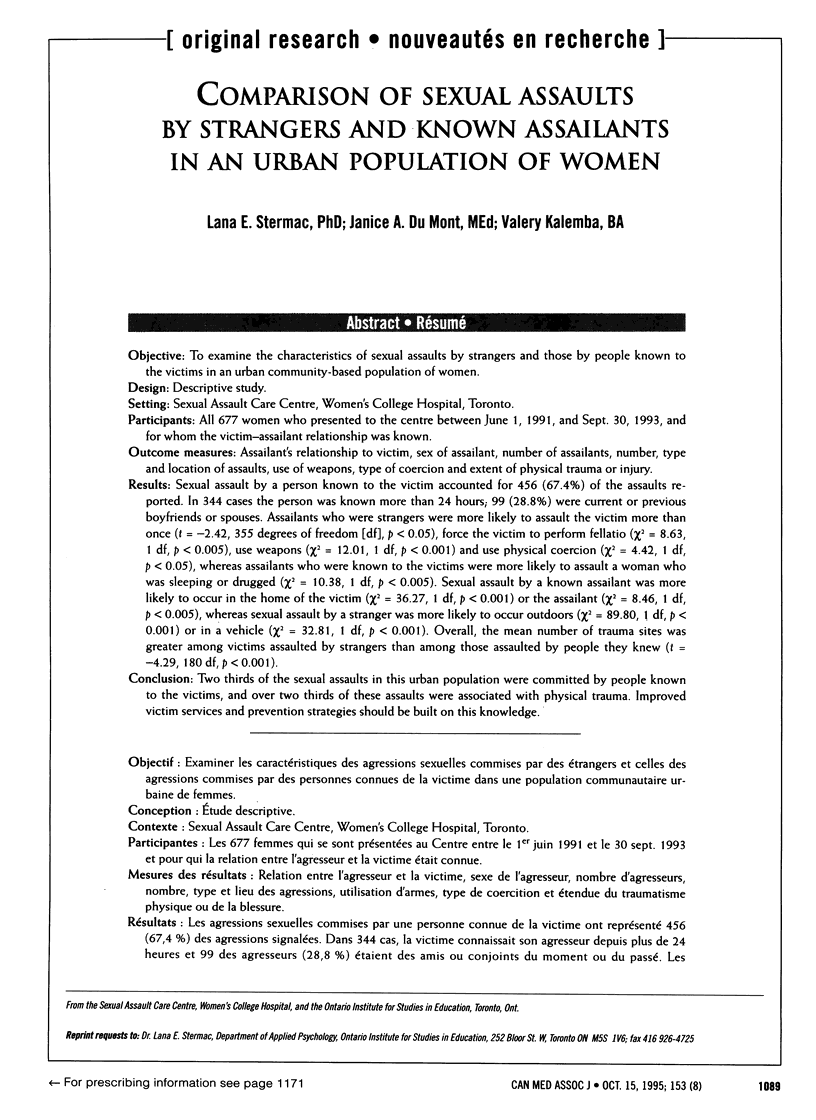
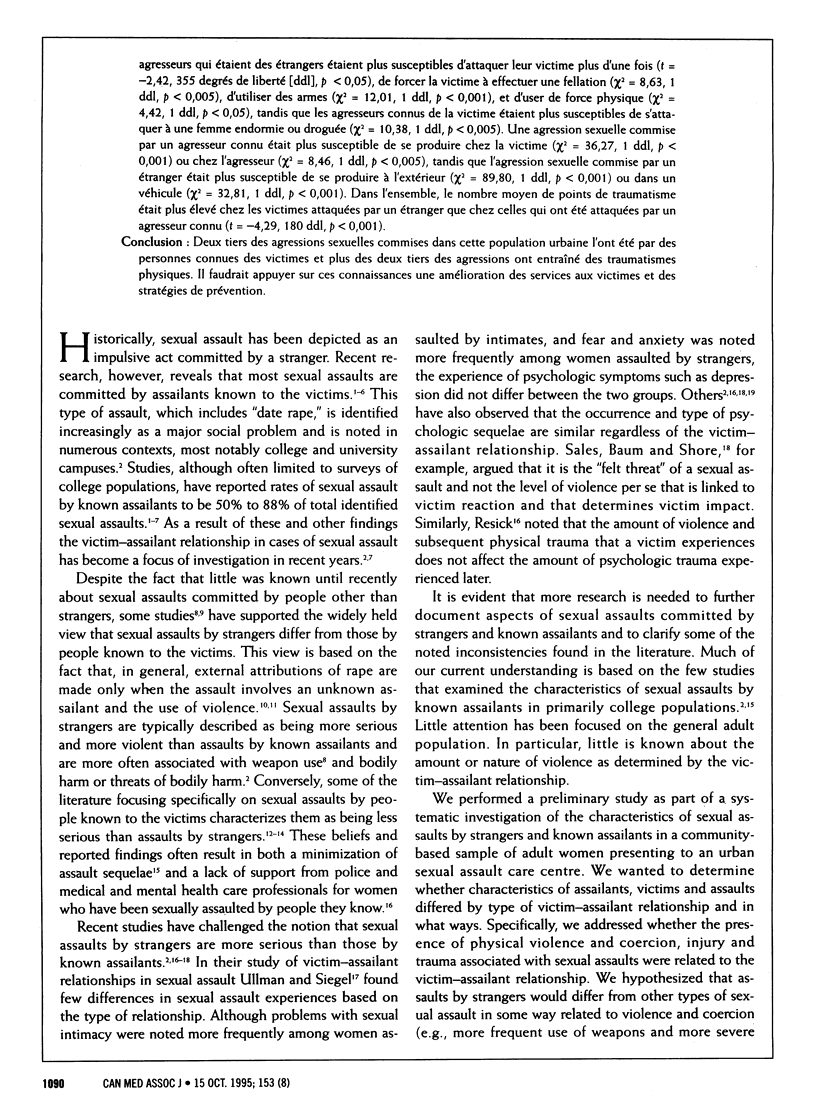

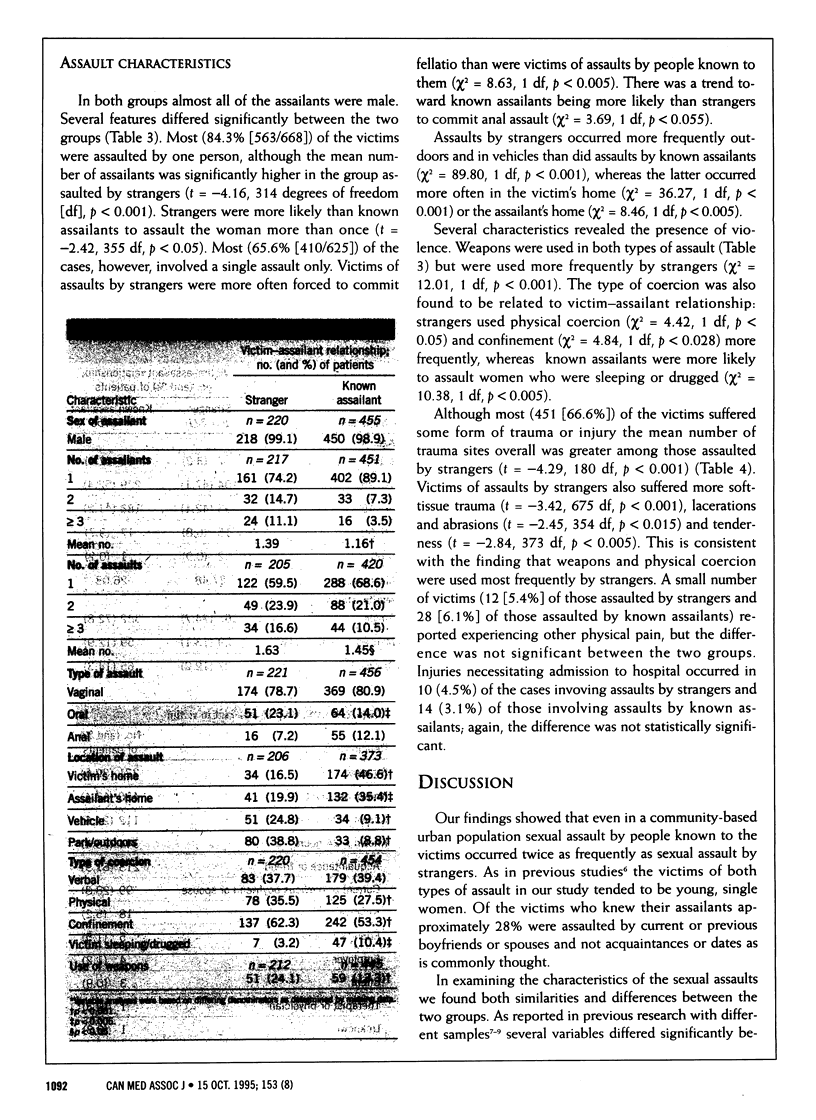
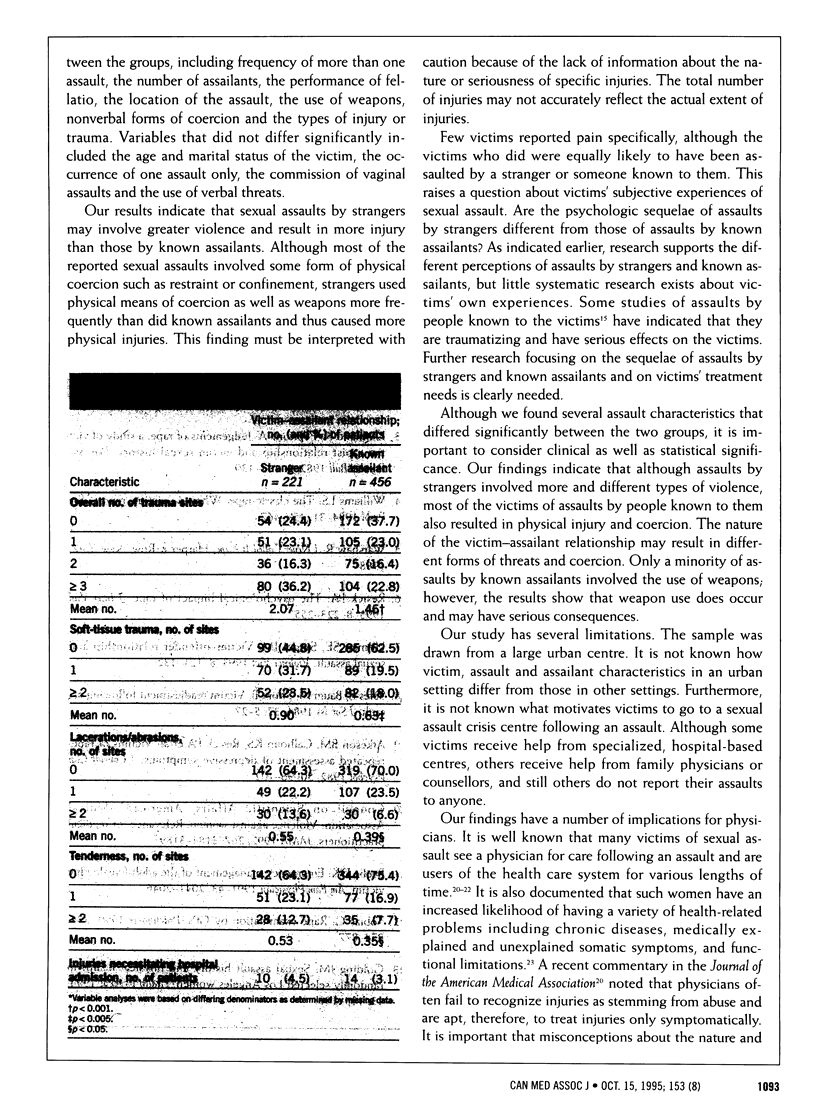
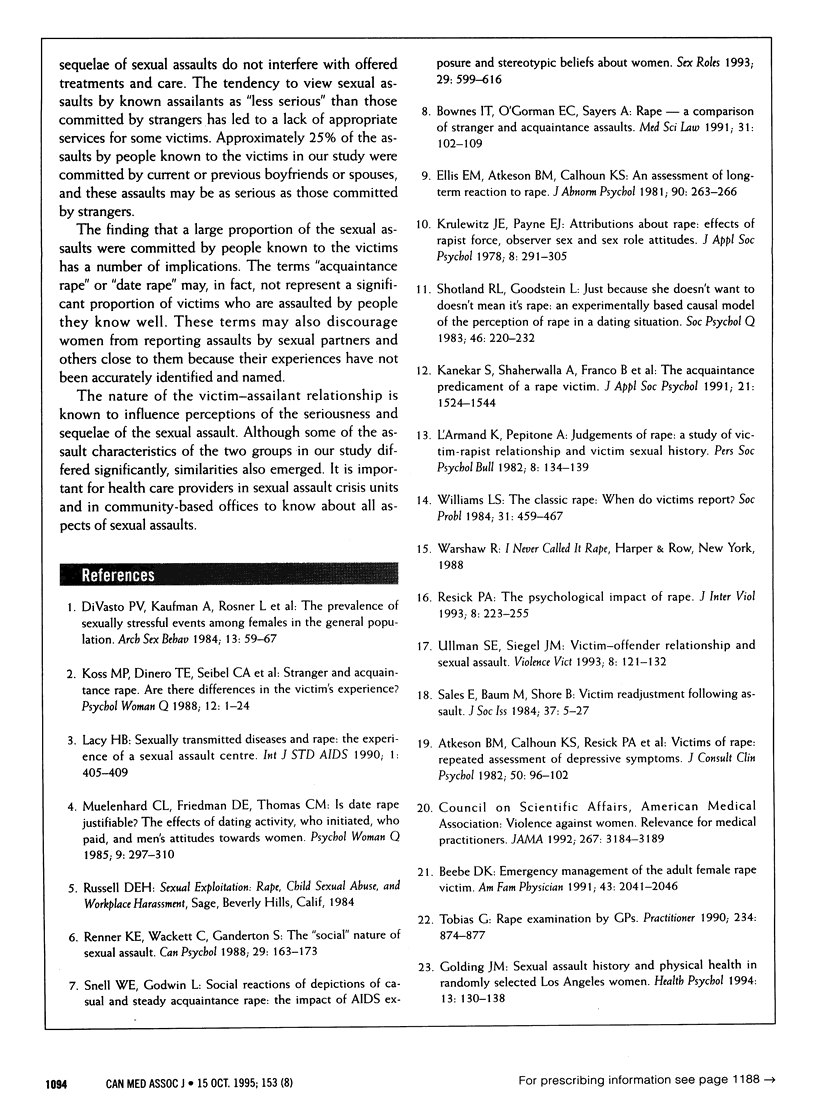
Selected References
These references are in PubMed. This may not be the complete list of references from this article.
- Atkeson B. M., Calhoun K. S., Resick P. A., Ellis E. M. Victims of rape: repeated assessment of depressive symptoms. J Consult Clin Psychol. 1982 Feb;50(1):96–102. doi: 10.1037//0022-006x.50.1.96. [DOI] [PubMed] [Google Scholar]
- Beebe D. K. Emergency management of the adult female rape victim. Am Fam Physician. 1991 Jun;43(6):2041–2046. [PubMed] [Google Scholar]
- Bownes I. T., O'Gorman E. C., Sayers A. Rape--a comparison of stranger and acquaintance assaults. Med Sci Law. 1991 Apr;31(2):102–109. doi: 10.1177/002580249103100203. [DOI] [PubMed] [Google Scholar]
- DiVasto P. V., Kaufman A., Rosner L., Jackson R., Christy J., Pearson S., Burgett T. The prevalence of sexually stressful events among females in the general population. Arch Sex Behav. 1984 Feb;13(1):59–67. doi: 10.1007/BF01542978. [DOI] [PubMed] [Google Scholar]
- Ellis E. M., Atkeson B. M., Calhoun K. S. An assessment of long-term reaction to rape. J Abnorm Psychol. 1981 Jun;90(3):263–266. doi: 10.1037//0021-843x.90.3.263. [DOI] [PubMed] [Google Scholar]
- Golding J. M. Sexual assault history and physical health in randomly selected Los Angeles women. Health Psychol. 1994 Mar;13(2):130–138. doi: 10.1037//0278-6133.13.2.130. [DOI] [PubMed] [Google Scholar]
- Lacey H. B. Sexually transmitted diseases and rape: the experience of a sexual assault centre. Int J STD AIDS. 1990 Nov;1(6):405–409. doi: 10.1177/095646249000100603. [DOI] [PubMed] [Google Scholar]
- Shotland R. L., Goodstein L. Just because she doesn't want to doesn't mean it's rape: an experimentally based causal model of the perception of rape in a dating situation. Soc Psychol Q. 1983 Sep;46(3):220–232. [PubMed] [Google Scholar]
- Tobias G. Rape examination by GPs. Practitioner. 1990 Oct;234(1495):874–877. [PubMed] [Google Scholar]
- Ullman S. E., Siegel J. M. Victim-offender relationship and sexual assault. Violence Vict. 1993 Summer;8(2):121–134. [PubMed] [Google Scholar]


